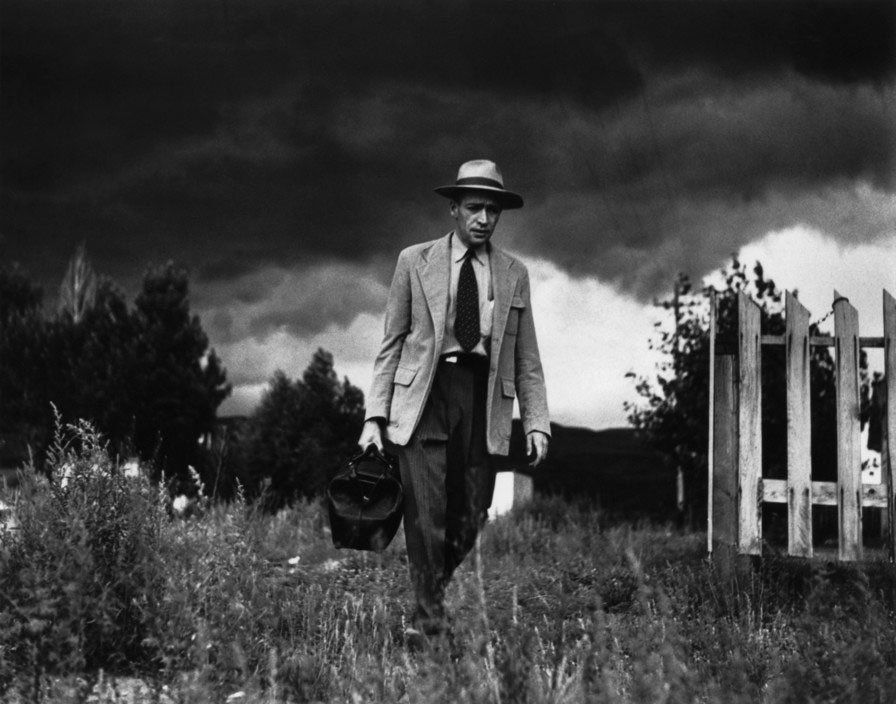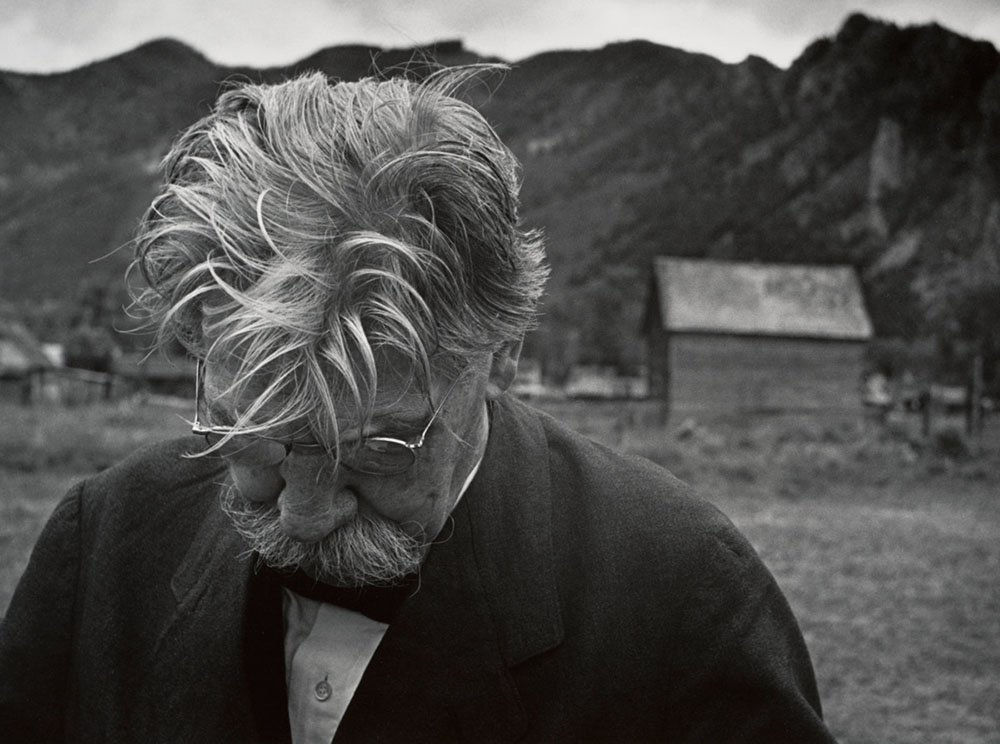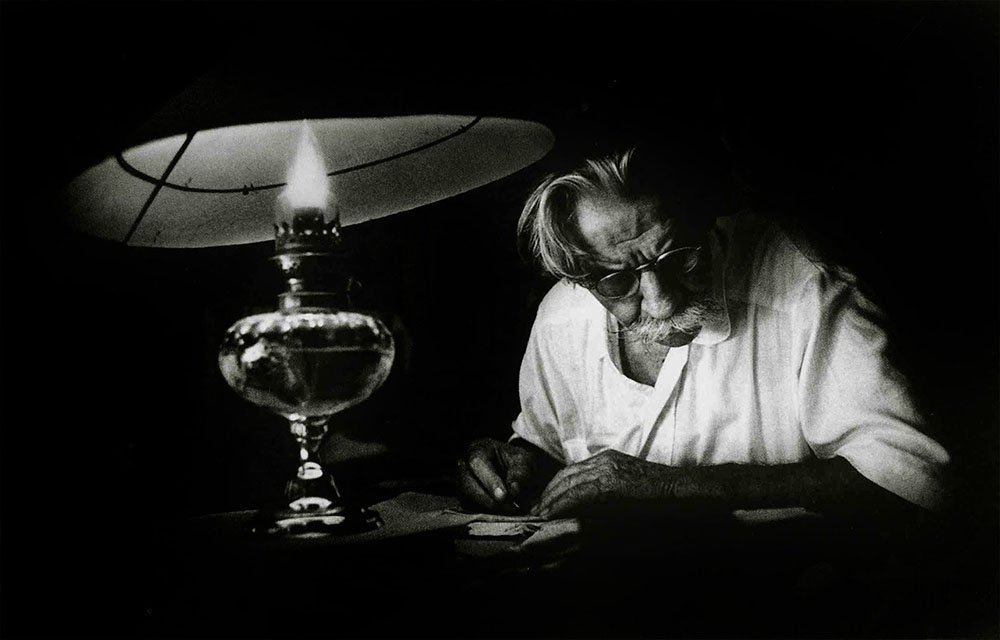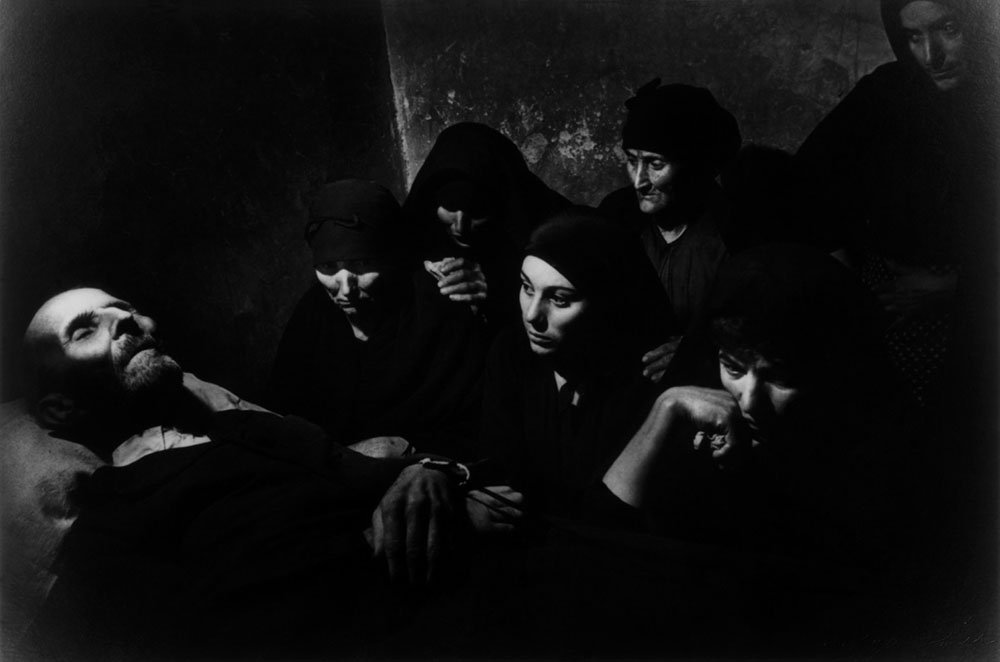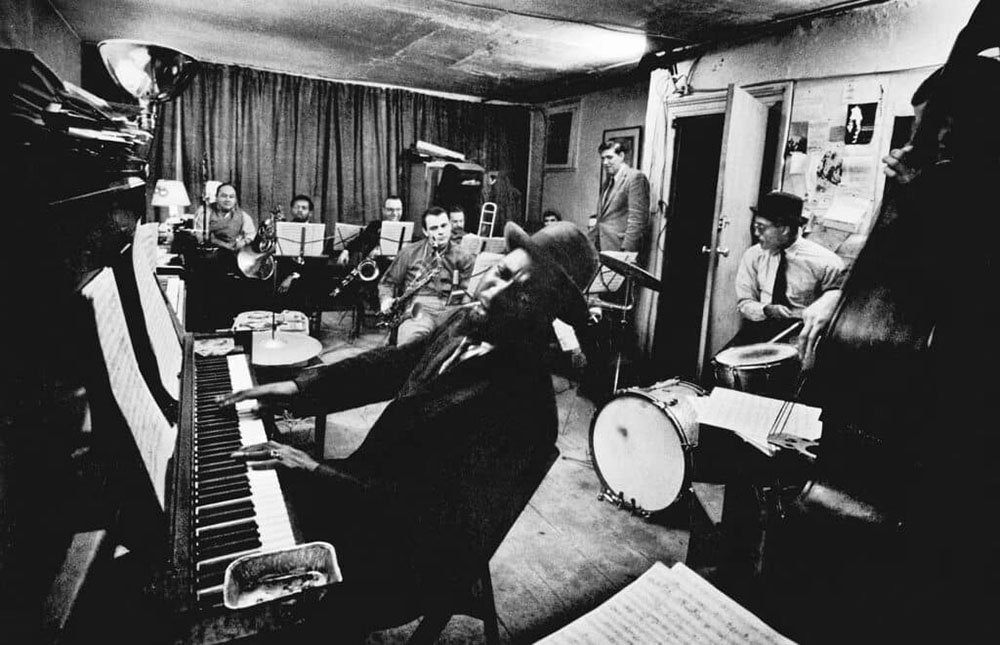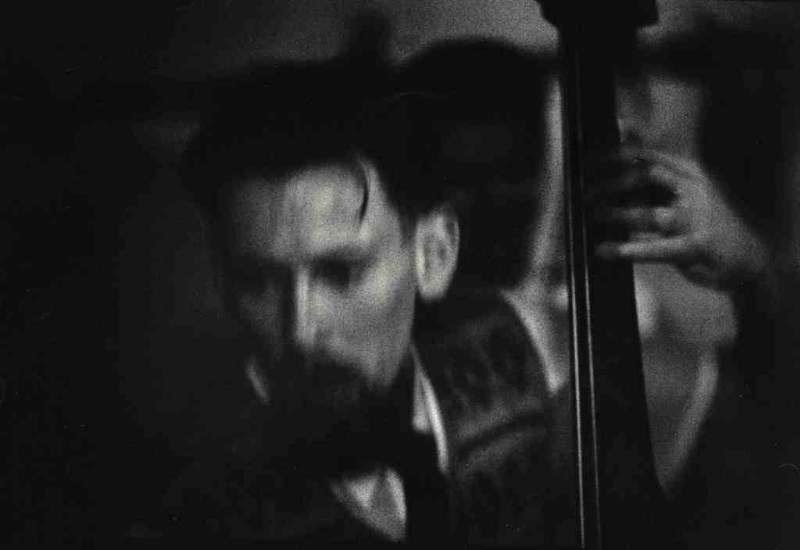W. Eugene Smith
“Available light is any damn light that is available!”
My introduction to photography took place at high school, where my development took parallel paths. In addition to spending time with the camera and in the school darkroom, I also spent a considerable amount of time in both the school and local libraries looking at the few photojournalistic picture books that were available, particularly a collection published by Time Life featuring the works of the great photographers who had graced the pages of those magazines. One of those photographers was W. Eugene Smith, and although I wouldn’t be aware at the time, his work was to have a major influence on me in later life.
W. Eugene Smith was born in Wichita, Kansas, on December 30, 1918. By the age of fifteen he already had sports photographs published in the Wichita Press, and after graduating from high school he attended the University of Notre Dame on a photography scholarship which he quit before completion. By the age of twenty he had moved to New York and was working for Newsweek magazine. However, this relationship didn’t last long, a theme that was to recur regularly throughout Smith’s troubled life.
“I didn’t write the rules. Why would I follow them?”
A perfectionist who had a reputation for being difficult to work with, he had been fired from Newsweek for refusing to work with larger format cameras in preference to 35mm. This opportunity led him to a role with Life magazine, a recently established publication which aimed to educate and entertain its audience through the use of high-quality photography in the form of photo-essays, a format in which Smith would eventually become an acknowledged master.
“I would that my photographs might be, not the coverage of a news event, but an indictment of war - the brutal corrupting viciousness of its doing to the minds and bodies of men; and, that my photographs might be a powerful emotional catalyst to the reasoning which would help this vile and criminal stupidity from beginning again”
By the time America entered WW2 Smith was considered to be one of the leading photojournalists of the day, while still only 23 years of age. He chose to leave Life magazine for a position at Parade, and on successful application to the Department Of Defence for an overseas position he found himself on the aircraft carrier USS Bunker Hill where he flew with combat missions aboard the Navy’s bombers, producing some of the most powerful and iconic documentary records of the US Navy’s ariel capabilities, the most famous of which shows Avenger bombers moving to attack Japanese positions on the island of Saipan.
US Fighter Bombers At The Battle Of Saipan
Smith eventually left Parade and the USS Bunker Hill in favour of a position back at the Life stable, where he immediately went into combat with the US Marines, once again producing iconic images from the Pacific theatre. One particularly iconic image that features regularly in appreciations of Smith’s work comes from the Battle of Iwo Jima in 1945 and depicts a group of marines sheltering amongst burnt tree stalks while munitions explode directly in front of them. This is often interpreted as showing shell fire, indeed in one book it is even entitled Sticks and Stones and Flying Bones. However, on the Magnum website it is described as depicting a US Marine demolition team destroying a cave.
Smith’s war ended after being hit by a shell and it took over a year for him to recover from his injuries.
The Battle Of Iwo Jima US Marine Demolition Team
“What use is having a great depth of field, if there is not an adequate depth of feeling?”
After the war he continued to work for Life magazine, where amongst what he considered mundane assignments, he produced some of his most celebrated photo essays which set a framework for modern photojournalism. These included The Country Doctor, a documentary following the life and work of one Dr Ernest Ceriani who had a practise in the small rural town of Kremling, Colorado. For this Smith adopted a fly on the wall approach, where he blended into the wallpaper as it were. In this essay he brought us many beautiful images that show the balance between Dr Ceriani’s life and work, and his responsibilities to the community that he served. This photo essay contains another Smith classic, where the doctor is shown in a kitchen, dressed in scrubs, holding a coffee while smoking a cigarette. His gaze is vacant, he looks empty. He has just lost a mother and her baby during childbirth.
Other Smith classic photo-essays from this period include Nurse Midwife, Spanish Village, and an essay on Albert Schweitzer
“Never have I found the limits of the photographic potential.
Every horizon, upon being reached, reveals another beckoning in the distance. Always, I am on the threshold.”
Smith’s constant drive for perfection and his demands for editorial control over his work led to many clashes with the Life hierarchy and he eventually left due to a disagreement over the layout of his Albert Schweitzer essay, turning his back on a highly lucrative salary that in today’s terms would be a six-figure sum. In 1955 he joined the renowned Magnum agency, and his first assignment took him to Pittsburgh where he had been commissioned to produce one hundred images in a three-week period for a feature on the city’s upcoming Bicentennial. For this assignment he was provided with furnished accommodation which included a fully equipped darkroom, accommodation which would also house the twenty odd pieces of luggage and hundreds of LP records and books that he had brought with him. Clearly Smith had other plans. He had decided that this project would be his magnum opus, he equated it to Beethoven’s Ninth and other major classics. It would be four weeks before the camera even made an appearance, and another year before he had finished shooting, a year in which he produced seventeen thousand negatives. He eventually pared this down to a final selection of two thousand images but had difficulty in realising the project in terms of publication. His refusal to relinquish editorial control once again led to the loss of several highly paid offers. He eventually got his wish when Popular Photography agreed to his demands by publishing eighty-eight images from the project but paid only a small fraction of what he had been previously offered, and although he had full editorial control, he was still bitterly disappointed with the final result.
Pittsburgh Coke Ovens
“I’ve never made any picture, good or bad, without paying for it in emotional turmoil.”
The combination of self-induced pressures in trying to realise the Pittsburgh project, the financial instability he had imposed on his family and also the death of his mother drove Smith to the brink of destruction. In 1957 he left the family home and moved into a near derelict loft in the wholesale flower district of Manhattan, at 821 Sixth Avenue. He shared this loft space with various jazz musicians, and many others would visit in the early hours of the morning for jam sessions, straight from performing gigs at many of New Yorks’ most well-known venues. Some of the biggest names in jazz are featured in this body of work, including Thelonious Monk, Sonny Clark, Miles Davis, Chick Corea and the composer and arranger Hall Overton. This was eventually to lead to the body of work known as The Jazz Loft Project where Smith not only documented the sessions photographically but also wired the rooms for sound and recorded over four thousand hours of chatter and music on various reel to reel recorders. The historical significance of this has only recently been realised thanks to the research by the author Sam Stevenson. In addition to photographing the ongoings inside the loft, Smith also pointed his lens through a crack in the window to document life outside. Smith’s original plan was to use his time at the loft to finish the Pittsburgh project, but it never really happened. By now Smith was a heavy user of alcohol and amphetamines and is documented as having spent days on end in his darkroom going without sleep, all in the strive for that elusive perfection. On a purely personal note, for me this body of work is Smith’s finest. Earlier this year I purchased Stevenson’s latest edition of the book the Jazz Loft Project, which features pictures and transcriptions from the tapes that Smith recorded. On first thumb through the pictures were classic Smith, beautiful black and white images with that classic Smith humanity. The transcriptions I wasn’t so sure about, however once further study got underway it was a book I simply couldn’t put down. It’s a remarkable piece of work. There are many stunning images in it, probably the most well-known being a close crop side shot of Thelonius Monk in full flight with cigarette in mouth. However, my own particular favourite is a close crop of British jazz bassist Peter Ind, an image that I hadn’t seen before. It’s a close up shot, we don’t see the background, the other musicians or even the full instrument. It’s grainy and soft, Ind’s eyes are focused, a wisp of greased hair has fallen over his forehead, and his fingering shows that of a trained bass player rather than the death grip favoured by those from a less formal background. I’ve been there, I was a jazz bassist, so maybe that’s why this deceptively simple image appeals so much, a moment where two artists at the absolute peak of their creativity are momentarily connected by a lens.
Smith’s time at the loft ended in 1965, by which time had a made roughly forty thousand pictures in addition to the already mentioned four thousand hours of audio recordings.
“I try to take what voice I have and I give it to those who don’t have one at all”
Having spent time in Japan during WW2 and again in the following years, he made his final trip in 1971 accompanied by his partner Aileen Mioko. This was at the invitation of a friend who wanted him to visit the fishing village of Minamata and document a scandal involving the Chisso chemical company that had been discharging mercury into the sea. This mercury then found its way into the food chain, resulting in birth defects and neurological disorders that collectively became known as Minamata Disease. Smith’s work here lasted three years, and again he was seriously injured during a protest at the Chisso factory where he received a beating from employees of the company. The work that Smith produced during this period is breathtaking and includes another of his most celebrated images - Tomoko and Mother In Bath. This story is also told in the film of the same name starring Johhny Depp in the role of Smith.
Minimata Fishing Boats
Tomoko Uemera In Bath
Smith returned from Minamata in 1974, where, after a stay in New York he moved to Tucson Arizona to join the teaching faculty at the University of Arizona. By now his health had deteriorated markedly, and after a series of strokes he passed away on October 15th, 1978, leaving an archive that weighed twenty-two tones and had to be transported in two eighteen-wheeler trucks.
“Passion is in all great searches and is necessary to all creative endeavours.”
This simple appreciation by me can in no way quantify the impact that W. Eugene Smith had and continues to have on photojournalism and indeed the wider arena of photographic art. He is the photographer whose work I have studied most, from all those who continue to inspire me. The beautiful monochrome tonality of his images, not to mention the humanity contained within resonates with me. I find his life story sad and yet inspirational in equal measures, the archetypal troubled genius, the Mozart of photography.
As I write this last paragraph near the forty-fifth anniversary of Gene’s passing, I reflect on the impact that his photography has had on my own journey. Whilst the portrayal of an event in monochromatic tones is a purely individual taste in terms of greyscale tones used and their distribution throughout the final frame, there’s no doubt that the early exposure to his work has shaped what I now consider to be my own ideal monochromatic presentation. The gold standard if you will. The W Eugene Smith standard.
W. Eugene Smith Magnum
Images copyright Magnum Photos



